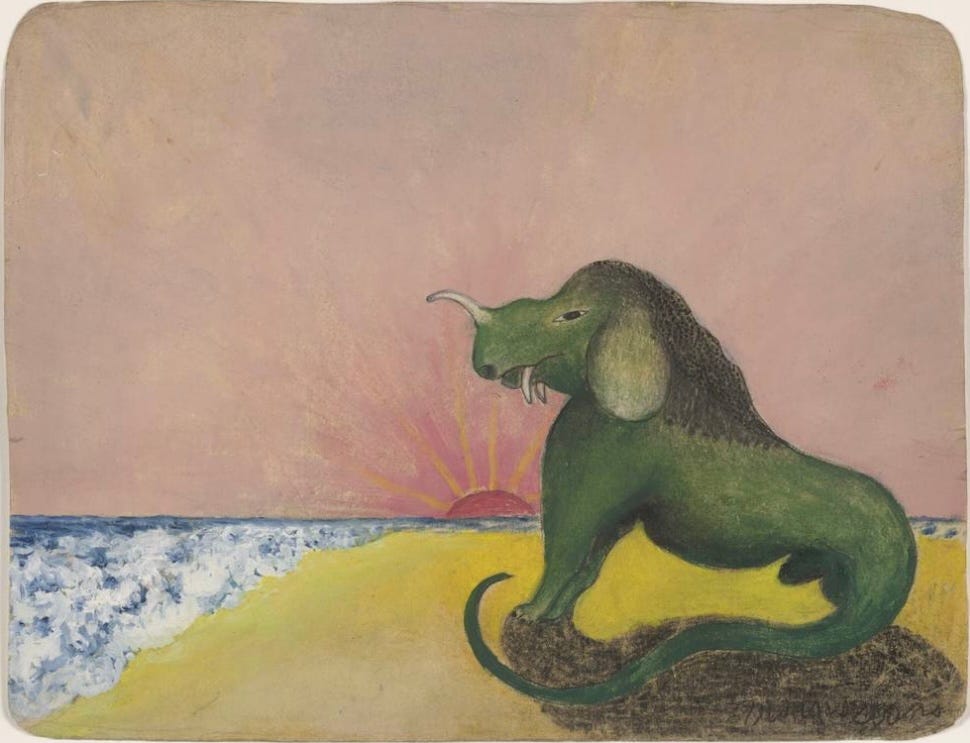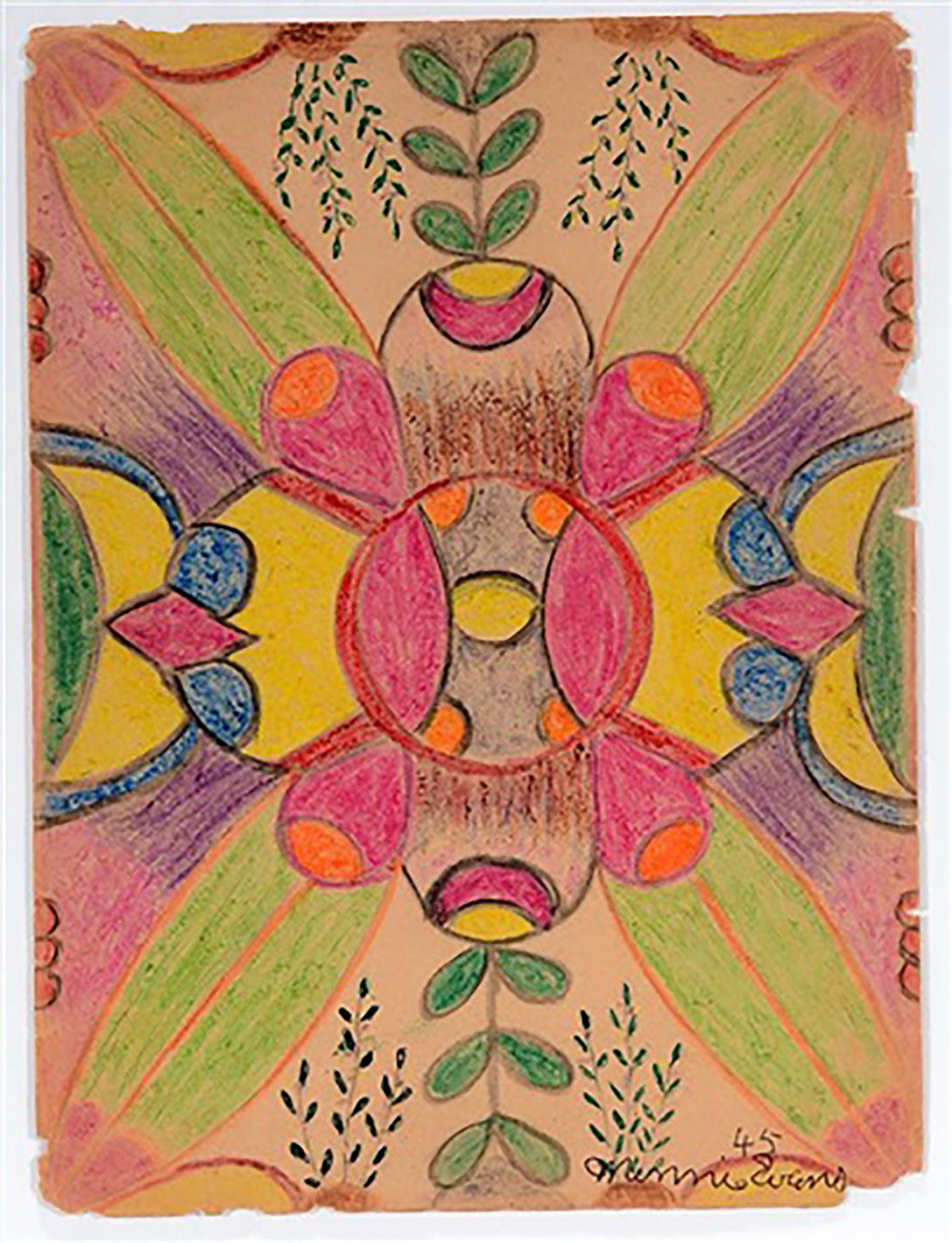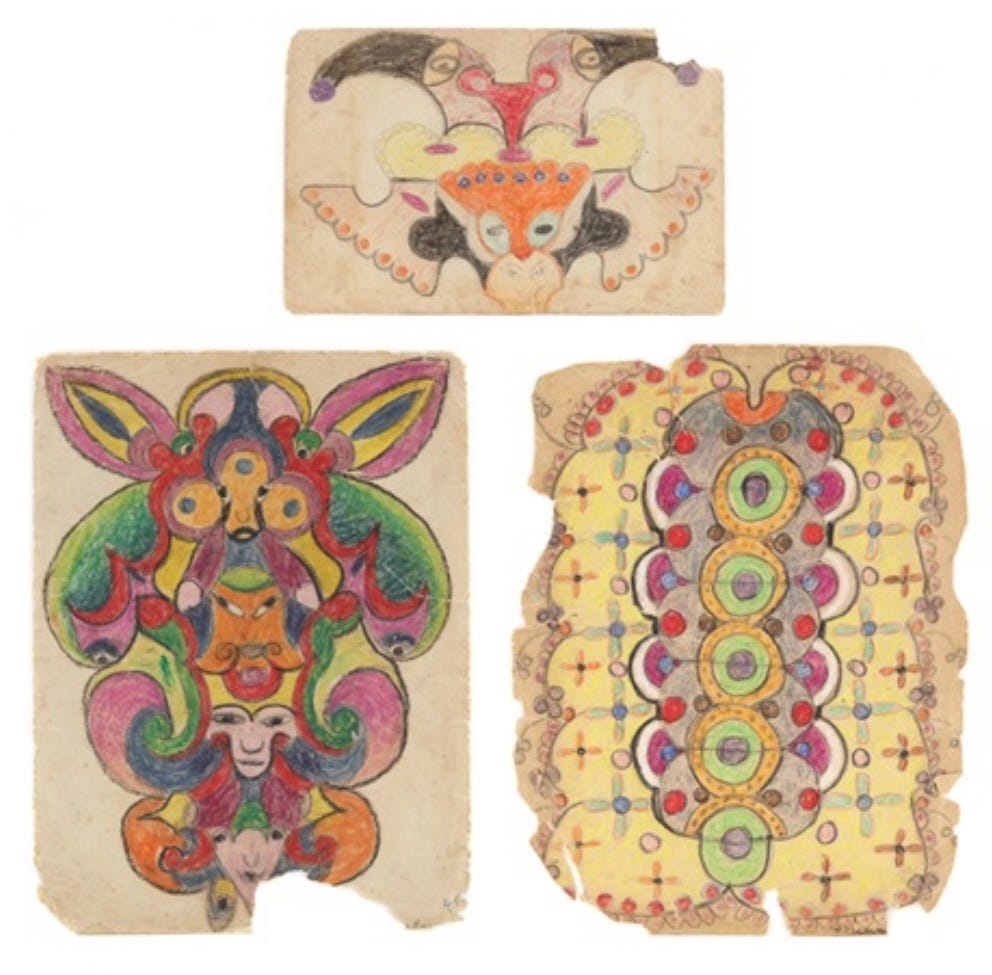Happy Ancestral Art Wednesday!
This is part of a series featuring an artist in the African diaspora and the significance of their work. Today’s feature is about Minnie Evans.
“I never plan a drawing, they just happen. In a dream it was shown to me what I have to do, of paintings. The whole entire horizon all the way across the whole Earth was out together like this with pictures. All over my yard, up all the sides of trees and everywhere were pictures.”
—Minnie Evans
In 2020, in the library at Maryland Institute College of Art, I wandered the aisles scanning the colorful spines of books in search of inspiration. I was carving my career path in painting and learning new methods for how to approach the creative process. I stumbled across a collection of artwork by Black artists and one of them was Green Animal, a drawing made by Minnie Evans in 1963.
The mythical creature caught my attention because of its unusual green hue. In this piece, the animal sits peacefully on the shore of a beach. A red Sun rises or sets on the horizon. Its direction of movement is up for the viewer’s interpretation. This was my first time being introduced to Minnie Evans’ abundant dream world. As I sat in the library contemplating this image, I became curious about its deeper meaning.

I often gravitate toward art that lives in the realm of surrealism, depicting everyday scenes with characteristics that challenge our perception of reality. I was fascinated that what would’ve otherwise been a simple drawing of a living animal transformed into an imaginary landscape in an alternate dimension. This creature has the characteristics of a lion, seal and buffalo combined. Its tusks are reminiscent of an elephant and the hair falls like a regal mane on its back. The expression seems content, radiating pure joy in solitude.
Who is Minnie Evans?
Minnie Evans was born in Wilmington, North Carolina in 1892 to parents Ella and Joseph Kelley who were farmers. Her mother’s lineage was Trinidadian and her ancestors arrived in the United States from the Caribbean during the transatlantic slave trade. For most of her elder years, she worked as a gatekeeper at Airlie Gardens. This estate was developed into a botanical landscape that inspired the vibrant color palette and floral symbolism in her artwork.
Her abstract portfolio contains various mediums, such as drawings, oil paintings, collage and mixed media. From day to day, she spent much time immersed in mystical visions and daydreams, which began appearing to her in 1935. She found catharsis in this space of infinite possibilities where elements of the ecosystem flourished in an Earthly paradise exploding with spiral formations, human faces, benevolent animals and bold plant life.

“The weavings of mind paths are not unlike the contents of the physical world.”
I wrote this statement during my initial studies of her art. Within the modern contemporary art world, she’s considered a folk artist. This is a racialized term for Black and Brown artists who create with minimal resources on low income. It situates us inside a hierarchy of power below non-melanated (Asian, Middle Eastern and Caucasian) artists who are typically given a head start on the upward climb toward fame and recognition.
However, I believe this term folk artist provides an opportunity to explore the genius and artistry of lesser known visionaries who expressed a keen eye for beauty through their work. The statement above refers to the close relationship between the spiritual and material worlds. All matter originates from a metaphysical place where our thoughts, emotions and visions exist.
Minnie Evans demonstrated this gracefully in her enchanted illustrations that show symmetrical faces blooming from parallel universes, psychedelic flora and fauna, and repeating patterns that conjure extraterrestrial organisms.

The style and rhetoric surrounding her visual compositions reflect her embodiment of many diverse nations. Her art is a continuation of pre-colonial civilizations that collapsed in ancient times. It reawakens the natural cosmology of these early people whose lives and memories have been erased or forgotten. Known as the window to the soul, eyes appear frequently in her work as representations of universal intelligence and godly omniscience.
I recognize her creations as a testament to indigenous survival through fantasy. Her life and art reveals our collective strength, resilience and ability to endure the obstacles of colonial occupation using the gifts of the natural world. She lived in a blooming wonderland, drawing and painting on sunny days. Her essence sparks a sense of hope and optimism, reminding us that we can always find magic and wisdom in the environment.
“We talk of heaven. We think everything is going to be white. But I believe we’re going to have the beautiful rainbow colors.”
—Minnie Evans

Ancient wisdom lives within you,
Alexis Akua






